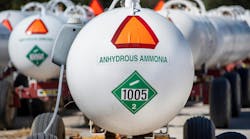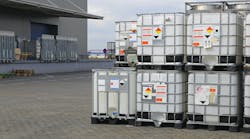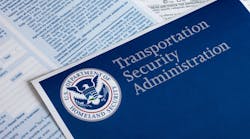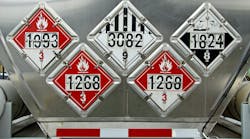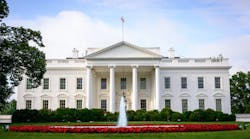The US Department of Transportation and the Pipeline and Hazardous Materials Safety Administration on July 23 released the details of their comprehensive rulemaking proposal to improve the safe transportation of large quantities of flammable materials by rail--particularly crude oil and ethanol--in the form of a Notice of Proposed Rulemaking (NPRM) and a companion Advanced Notice of Proposed Rulemaking (ANPRM).
The NPRM proposes enhanced tankcar standards, a classification and testing program for mined gases and liquids, and new operational requirements for high-hazard flammable trains (HHFT) that include braking controls and speed restrictions.
In the NPRM, DOT is proposing a two-year phase-out of the use of older DOT 111 tank cars for the shipment of packing group I flammable liquids, including most Bakken crude oil, unless the tankcars are retrofitted to comply with new tankcar design standards. The ANPRM seeks further information on expanding comprehensive oil spill response planning requirements for shipments of flammable materials. Both the NPRM and ANPRM are available for review and will be open for 60 days of public comment. Given the urgency of the safety issues addressed in these proposals, PHMSA does not intend to extend the comment period.
“Safety is our top priority, which is why I’ve worked aggressively to improve the safe transport of crude oil and other hazardous materials since my first week in office,” said Secretary Foxx. “While we have made unprecedented progress through voluntary agreements and emergency orders, today’s proposal represents our most significant progress yet in developing and enforcing new rules to ensure that all flammable liquids, including Bakken crude and ethanol, are transported safely.”
The NPRM is based on an ANPRM published by PHMSA in September 2013, and reflects feedback from more than 152,000 commenters. Specifically, PHMSA will seek comment on the following provisions:
|
|
|
PHMSA will concurrently publish an ANPRM on oil spill response plans, specifically current thresholds and their applicability to rail, in part in response to an NTSB recommendation issued in January 2014.
In addition to issuing the NPRM and ANPRM, PHMSA concurrently released a report summarizing the analysis of Bakken crude oil data gathered by PHMSA and FRA between August 2013 and May 2014. The data show that crude oil from the Bakken region in North Dakota tends to be more volatile and flammable than other crude oils. Collected as part of Operation Classification, a joint PHMSA and Federal Railroad Administration (FRA) effort, the data were initially gathered to verify that crude oil was being properly classified in accordance with federal regulations, and evolved to include more robust testing to better understand the characteristics of the product.
The safety risk presented by transporting Bakken crude oil by rail is magnified both by an increasing volume of Bakken being shipped by throughout the United States and the large distances over which the product is shipped. In 2008, 9,500 rail-carloads of crude moved through the United States compared to last year, when there were 415,000 rail-carloads. Moreover, on average Bakken crude oil shipments travel more than 1,000 miles from point of origin to refineries on the coasts.
PHMSA and FRA plan to continue the sampling and analysis activities of Operation Safe Delivery through the summer and fall of 2014 working with the regulated community to ensure the safe transportation of crude oil across the nation.
The new, comprehensive rulemaking will open for public comment once published in the Federal Register at www.regulations.gov.



